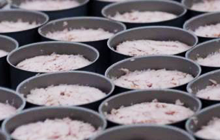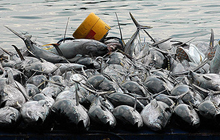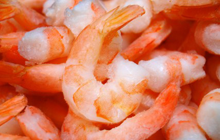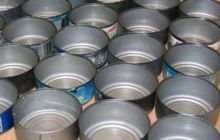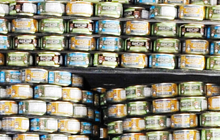Tuna Species

Name: Tongol (longtail tuna), Latin: Thunnus tonggol
Size + Weight: Average today abt 90 cm abt 15-20 kg
Biggest Angled Fish: 35,7 kgs Australia, 1982 Tim Simpson
Catching Areas:65% Western Pacific and35% Indian Ocean
Catching methods: Mostly pole and line, Long Lines
Share of all tuna caught: about 4 % or 125.000 m/t
Main Production Areas: Vietnam, Thailand, Indonesia.
Major markets: United States
Popular Product Forms: Canned (White Tuna), Fresh
Tongol is a very seasonal fish caught mostly by small vessels in the waters along the Malay and Burmese coast. Also around the Vietnamese and Indonesian archipelago there are local catches.
Product characteristics: The meat is quite tender and has a white color. It has not too much taste. It is by some more appreciated as a canned product then the somewhat drier albacore meat.
Future Supply : There is limited data available on the volume of the catch , and the status of the current stocks. One reason is that Tongol is mainly caught by small local vessels, which makes monitoring difficult. The general feeling is that tongol catches could increase slightly and still maintain a sustainable level. Availability tends to be very seasonal, and restricted to mainly Vietnam, Indonesia and Thailand.
Specie Fact Sheet Provided by www.atuna.com
Name: atlantic bonito, Latin: Sarda sarda or sarda spp
Size + Weight: Average today abt 40 -50 cm abt 2,5 kg
Biggest Angled Fish: 12 lb. 14 oz., Portugal Madeira Island,1979, Karl Ziegenfuss
Catching Areas: South Chinese Sea, Northern Mediterranean, Parts of the Black Sea, Parts o the Indian Ocean, North-East Atlantic Ocean
Catching methods: Mostly purse seining
Share of all tuna caught: less then 1%
Spawning Areas: within coastal waters
Life cycle: abt 1-2 years
Main Production Areas: Vietnam, Greece, Turkey, Thailand, Indonesia, Spain
Major markets: Turkey, Greece, Spain, Western-Europe
Popular Product Forms: Cooked, Canned
Bonito is a specie associated with the tuna family. Bonito is quite popular as a fried fish with olive oil, especially in the Mediterranean region. Due to its small size, and firm dark meat it is well fit for this purpose. The species is mostly fished in coastal water by small local vessels. The catches tend to be quite seasonal.
Product characteristics: The bonito meat has a firm texture and a darkish color, however small / young bonito can also have quite a light color, close to that of skipjack. This is one of the reasons why it is sometimes used as a cheaper substitute of skipjack tuna, especially for canning purposes. The bonito has a moderate fat content
Future Supply: Due to the fact that bonito are caught by relatively small vessels and in several local regions, also as by-catch, it is quite hard to determine what the supply will be or is. Catching volumes in the Black sea and Mediterranean have been decreasing during the last decade. The catches along the Vietnamese Coasts the Golf of Thailand, the Birmese Coast, and South China Sea supply the canned tuna industry. The size of the fish tends to become smaller, the supply is irregular and quite limited.
Specie Fact Sheet Provided by www.atuna.com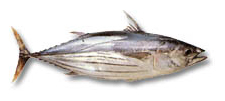
Name: Skipjack , Latin: Katsuwonus pelamis
Size + Weight:
Biggest Angled Fish: Average today abt 35 cm abt 2 kg
Biggest Angled Fish: 18 kgs , Mauritius 1971 by Joseph Caboche jr.
Catching Areas: Western Pacific Ocean, Eastern Pacific, Indian Ocean
Catching methods: Mostly purse seining
Share of all tuna caught: About 50-55% or 1.500.000 m/t
Life cycle: About 3 years max.
Main Production Areas: Vietnam, Thailand, Philippines, Indonesia, Ecuador, Ghana, Colombia, Ivory Coast, Senegal
Major markets: Japan (sashimi), Western-Europe, United States
Popular Product Forms: Canned, Fresh (whole fish), Frozen Loins, Fresh-Frozen Fillets, Smoked
Skipjack is the most popular tuna for consumption. It prefers to swim in the upper mixed layers of the ocean water, and mostly found between 45o N and 40o S. It is highly migratory and can be found all over the world within tropical waters.
Large schools sometimes mix with small yellowfin. Normally dolphins do not swim together with the small skipjack, which almost makes it a guaranteed dolphin-safe species.
Product characteristics: The meat of the skipjack has a somewhat darker of color sometimes even slightly pinkish. It has a relatively tender texture, and is has somewhat more a fishy taste then some other tuna species.
The small size of the fish gives small loins and chunks. Making it excellent for canned tuna chunks.
Specie Fact Sheet Provided by www.atuna.com
